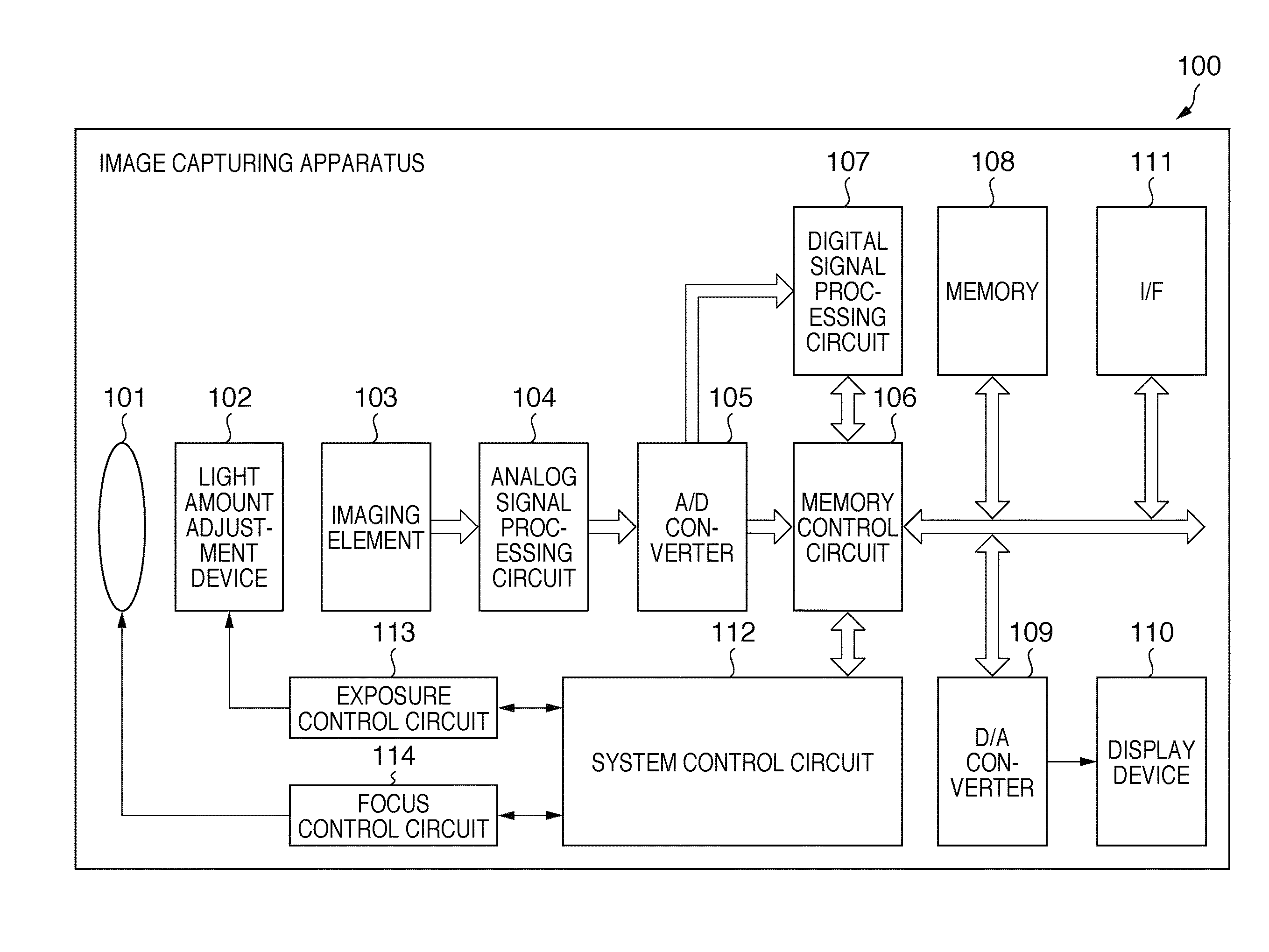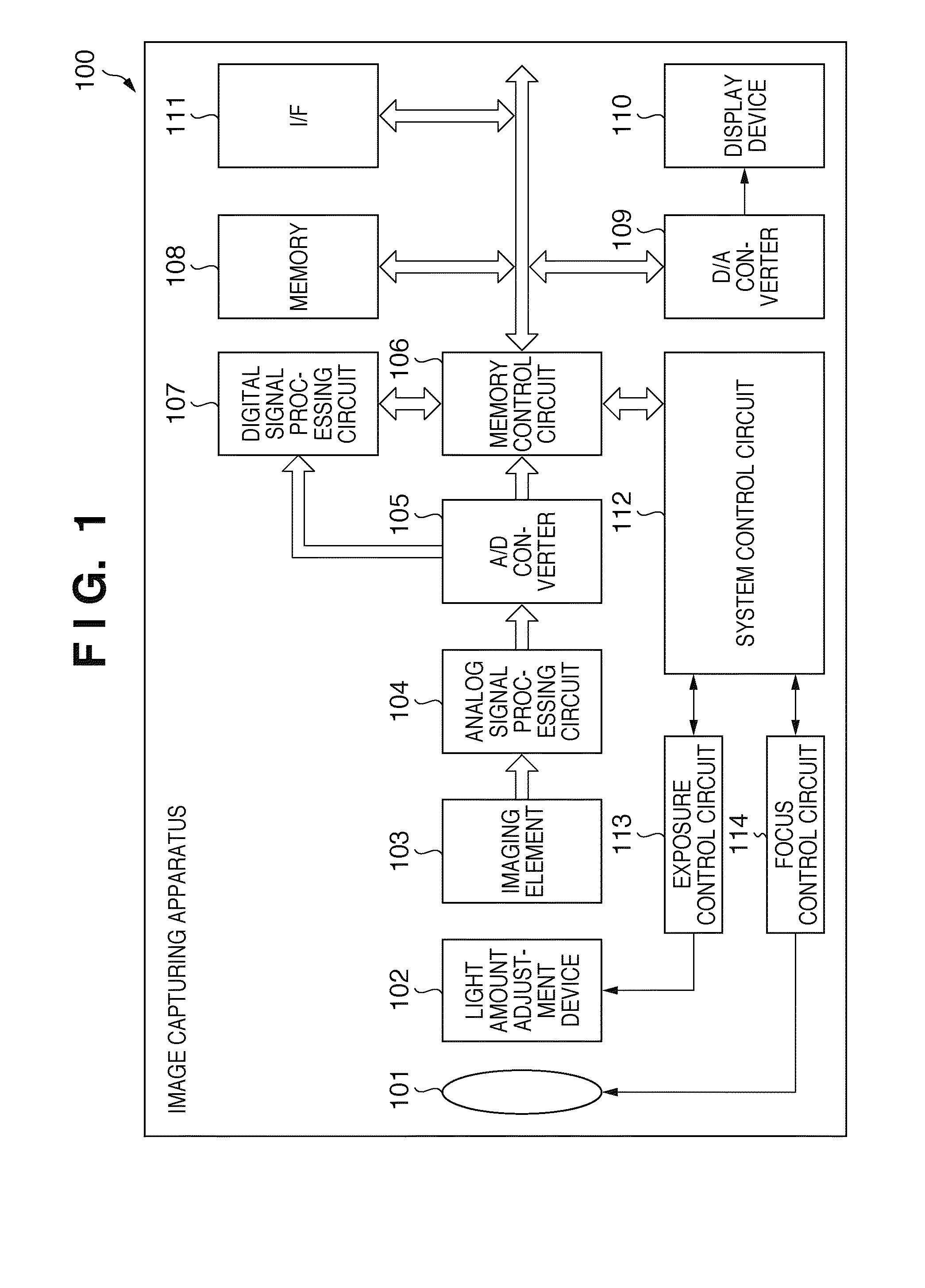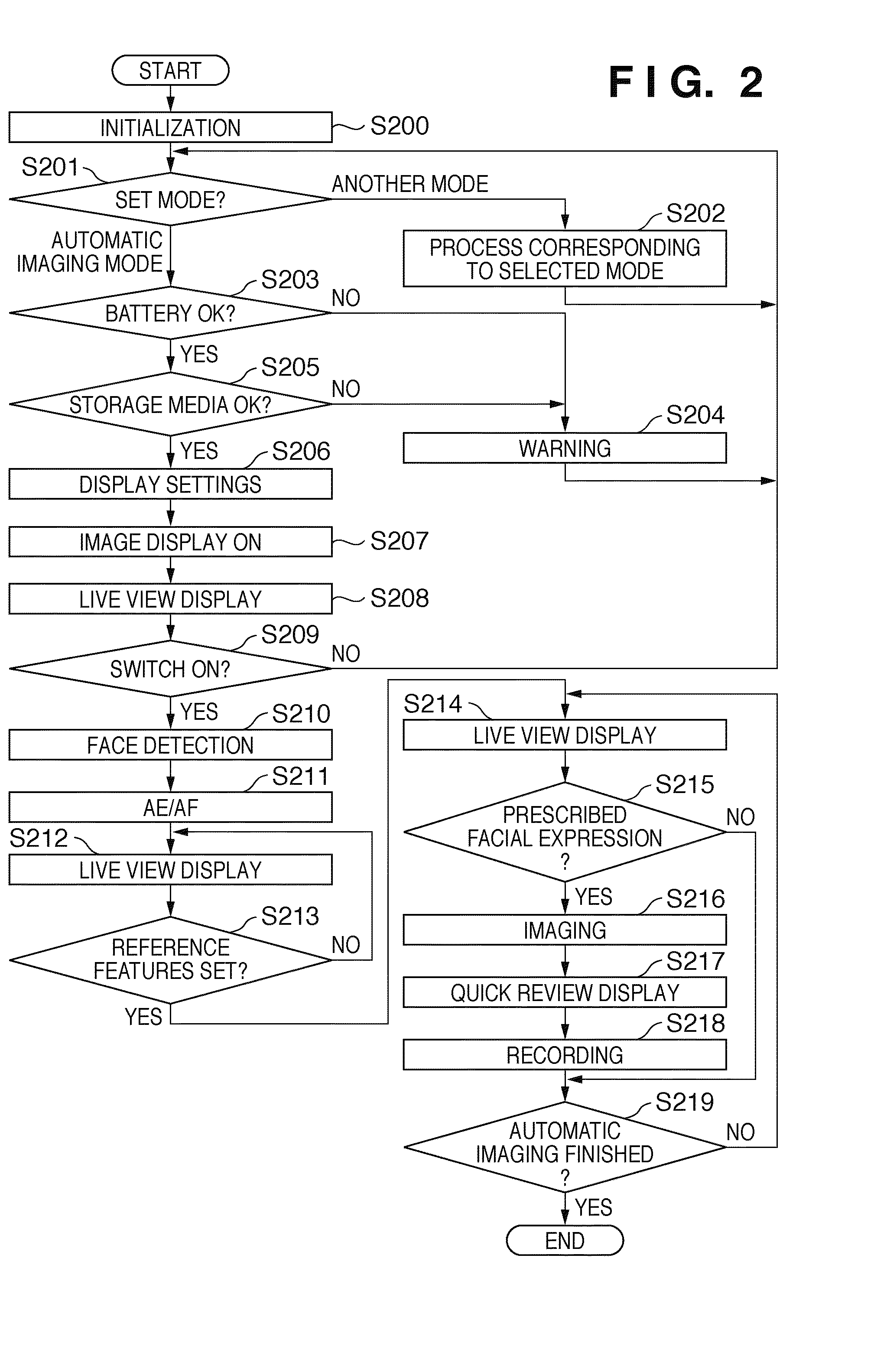Facial expression recognition apparatus and method, and image capturing apparatus
- Summary
- Abstract
- Description
- Claims
- Application Information
AI Technical Summary
Benefits of technology
Problems solved by technology
Method used
Image
Examples
embodiment 1
[0079]FIG. 1 is a block diagram illustrating the configuration of an image capturing apparatus 100 according to the embodiment. In the present embodiment, an electronic still camera is used as an example of the image capturing apparatus 100. Below, the image capturing apparatus 100 is also referred to as an “electronic camera”.
[0080]In FIG. 1, the numeral 101 designates an imaging lens group. The numeral 102 designates a light amount adjustment device comprising a diaphragm device and a shutter device. The numeral 103 is an imaging element that converts a luminous flux passing through the imaging lens group 101 and representing a subject image to electrical signals. The imaging element 103 is constituted, for instance, by a CCD or a CMOS, etc. The numeral 104 is an analog signal processing circuit subjecting the analog signal output of the imaging element 103 to clamping and gain processing. The numeral 105 represents an analog-to-digital (A / D below) converter converting the output ...
embodiment 2
[0128]A second embodiment will be explained next. FIG. 16 is a flow chart illustrating the overall operation of the second embodiment. The explanations below are provided with reference to the flow chart of FIG. 16. The processing performed up to steps S900-S910 is the same as in the first embodiment (steps S200-S210). In addition, the processing performed in steps S915-S920 is also the same as in the first embodiment (steps S214-S219).
[0129]In step S911, the system control circuit 112 performs personal identity authentication for faces detected in step S910. The technology of personal identity authentication is based, for instance, on methods utilizing the mutual subspace technique described in Japanese Patent Laid-Open No. 2000-30065, or methods described in Japanese Patent Laid-Open No. 2003-323622, in which the face region is divided into multiple subregions and comparison is performed for each subregion. In the present embodiment we use the method described in Japanese Patent L...
embodiment 3
[0135]A third embodiment will be explained next. The flow chart describing the overall operation of the embodiment is identical to the one used in the second embodiment (FIG. 16).
[0136]FIG. 19 is a flow chart representing step S914 of FIG. 16, i.e. the reference feature setting process of the third embodiment. Up to step S1000-step S1004 in FIG. 19, the process is identical to the first and second embodiments, namely, steps S300-S304.
[0137]In step S1005, the system control circuit 112 first sets regions for spatial filtering. For instance, the spatial filtering regions are regions 1100, 1101, and 1102 in FIG. 20. These regions are determined with reference to the eye detection positions 400, 401, face detection position 402, and mouth detection position 403. Next, in order to determine whether this is a neutral state, spatial filtering is performed in region 1102 of FIG. 20. The spatial filter used may be, for example, a Sobel filter for horizontal and vertical edge detection, but i...
PUM
 Login to View More
Login to View More Abstract
Description
Claims
Application Information
 Login to View More
Login to View More - R&D
- Intellectual Property
- Life Sciences
- Materials
- Tech Scout
- Unparalleled Data Quality
- Higher Quality Content
- 60% Fewer Hallucinations
Browse by: Latest US Patents, China's latest patents, Technical Efficacy Thesaurus, Application Domain, Technology Topic, Popular Technical Reports.
© 2025 PatSnap. All rights reserved.Legal|Privacy policy|Modern Slavery Act Transparency Statement|Sitemap|About US| Contact US: help@patsnap.com



